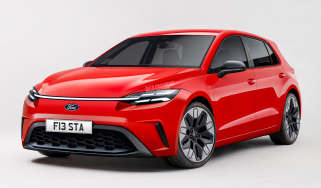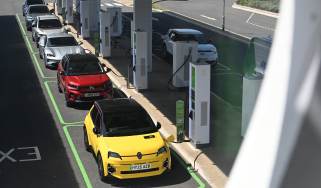Same name, different car: weird car couples with identical names
Choosing a car name isn’t an easy task, which is why some badges have been used more than once

The amount of research that a car manufacturer carries out before naming a new model might surprise you. There is, after all, an array of different considerations. Does the name suit the car? Will it have cross-border appeal? Might the proposed moniker cause offence in a specific language?
And then there is the X-factor. David Placek of Lexicon Branding, who was responsible for naming the Subaru Outback and Forester, as well as the Lucid brand name, explained to Auto Express: “Naming cars is more complex than most other products. There is more emotional value in naming a car than, for example, a new bottle of water or detergent.”
With all this to take into account, it’s inevitable that some names have been shared by models from different makers. Here we look at those that have appeared more than once – and give our verdict on which was the more successful execution.
Maserati Sebring vs Chrysler Sebring
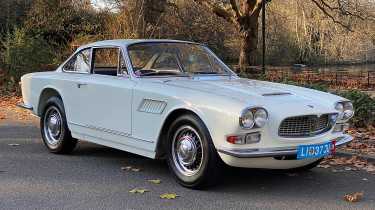
One motorsport venue that has won over car makers is Sebring. The Florida circuit has hosted some of the world’s key endurance races since 1950. One of the most memorable events in the early years was 1957’s 12 Hours of Sebring, won for Maserati by Juan Manuel Fangio, in tandem with France’s Jean Behra.
The win was celebrated by the firm in 1962 with the launch of the Maserati Sebring, a 2+2 coupé now rightly given classic status. In the mid-nineties the Sebring badge started to appear on a family of Chrysler saloons, coupés and convertibles, including, for a short while, in the UK. But the Maserati is the Sebring to have.
Mazda GLC vs Mercedes GLC
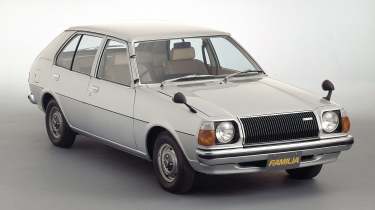
For Brits of a certain age, the GLC equates to the militant Greater London Council of the early eighties. In the car world, though, GLC has been used by two brands on two wildly contrasting vehicles.
Firstly, it was deployed by Mazda in 1981 on the US version of a family model sold in Europe as the 323. Buyers were told it stood for ‘Great Little Car’.
In 2014, Mercedes rebranded its GLK SUV as the GLC as part of a new system designed to make it easier to identify a model by its name. Space limitations stop us explaining the Merc methodology in full, but it actually makes a lot of sense.
However, the sheer boldness required to hail a product as ‘great’ in its name means the Mazda gets our vote here.
Ford Sierra vs GMC Sierra
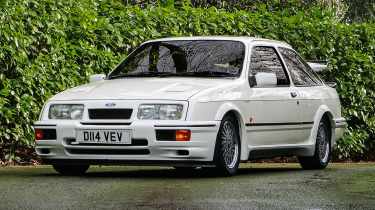
A ‘sierra’ is generally accepted to be a range of mountains, especially in Spanish-speaking countries. But it’s often used as a code word in radio communication for the letter ‘S’. It’s perhaps unsurprising then that it has popped up more than once on vehicles.
In Britain, the name Sierra only means the jelly-mould Ford model that replaced the hugely popular Cortina in 1982, and later spawned a truly memorable RS Cosworth version.
Across the pond, though, American petrolheads recognise the Sierra nameplate as a long-established heavy-duty pick-up from General Motors brand GMC that remains on sale to this day. While the latter’s enduring appeal is admirable, we simply can’t argue against Ford’s eighties icon.
Ferrari Monza vs Opel Monza
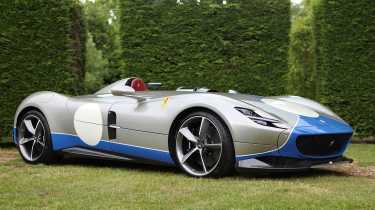
If you want to convey glamour and speed, naming a car after a race track is a wise move – particularly when it’s one of the world’s most feted layouts. Monza, near Milan in northern Italy, opened in 1922. Little surprise, then, that Ferrari used it on fifties’ sports cars, and in 2018 on the Monza SP1 and SP2 speedsters.
But it also found favour with Opel, which sold two generations of the Monza fastback coupé between 1977 and 1986, the first of which was available in Britain as the Vauxhall Royal Coupé. The Italian connection means Ferrari wins this one.
Maserati Bora vs Volkswagen Bora

Type ‘Bora definition’ into Google and you’ll find that it is a strong, cold, north-east wind blowing in the upper Adriatic. It’s featured on models from Maserati and Volkswagen, too.
The former was a Giorgetto Giugiaro-penned seventies stunner that’s hailed as one of the all-time classic wedge designs. The latter was a rather beige saloon version of VW’s Golf from 1999. The V8-engined supercar wins here.
Jeep Avenger vs Hillman Avenger

The most recent duplication has seen Jeep’s 2023 European Car of the Year wear a badge last seen in the UK in the seventies and early eighties. Objectively, Avenger evokes memories of Marvel’s superheroes, or the classic sixties British espionage TV series that starred Patrick Macnee and Diana Rigg.
But before its successful rebirth with Jeep, the Avenger name had a chequered past, appearing on a largely unexciting small family car that was first sold in the UK as a Hillman, then a Chrysler and finally a Talbot. Chrysler kept the rights to the name, explaining its re-emergence on a US Dodge saloon in 2007. But few could argue that it sits best on Jeep’s small SUV.
Volkswagen California vs Ferrari California
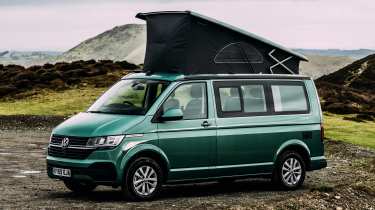
Using place names for vehicles makes a lot of sense, but only if the location is glamorous. California is so embedded in popular culture that it’s an obvious choice. It conjures up images of beaches and the great outdoors, so it seemed a good fit when it first appeared on a Volkswagen camper van in the late eighties.
Perhaps California’s association with sunshine was behind its use on Ferrari’s V8 hard-top convertible from 2008, too (it also used the badge on the fifties’ 250GT). But we’ll give VW the nod.
What's the best car name ever? Let us know your thoughts in the comments section...
Find a car with the experts

